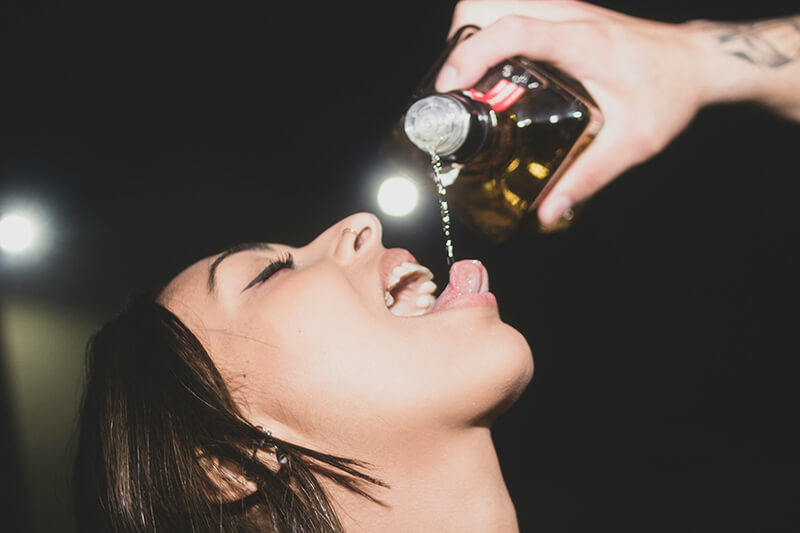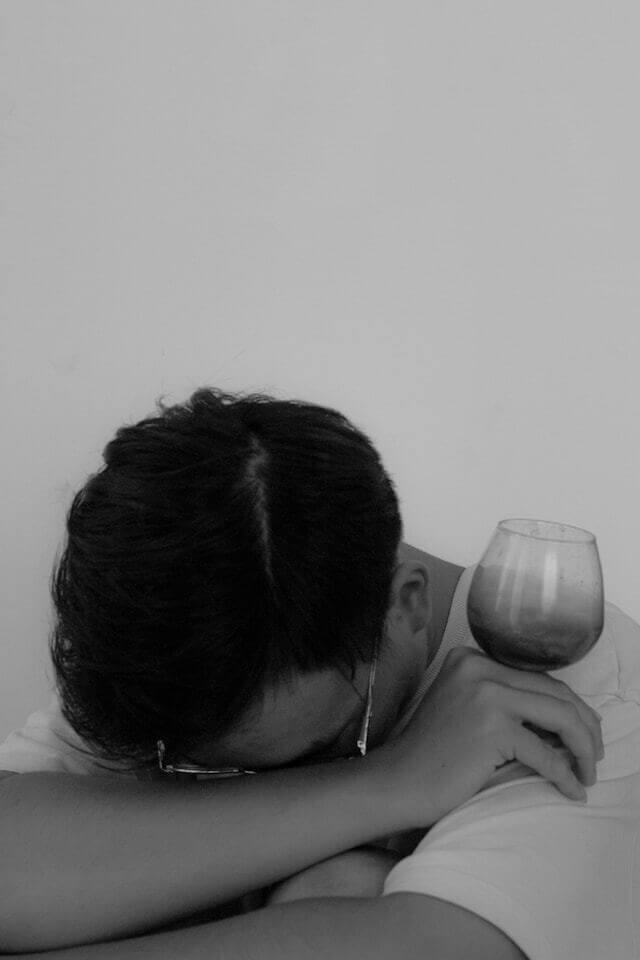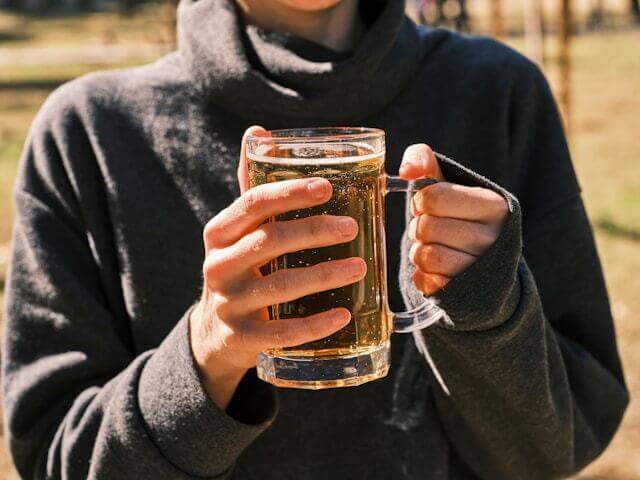Understand how alcohol affects your body and brain
Most people think of alcohol’s effects as temporary a buzz, a hangover, a blackout. But repeated drinking can cause real, lasting changes throughout your body, especially in your brain.
Alcohol and the brain
Alcohol slows communication between brain cells. At first, this causes lowered inhibitions and relaxation. But over time, repeated exposure can interfere with memory, judgment, and emotional control.
Heavy drinking can shrink the brain’s gray matter, the part responsible for thinking clearly and making decisions. It also disrupts how your brain handles stress and reward which is why alcohol can become a coping tool, then a dependence.


Alcohol and the body
Alcohol affects nearly every organ:
- Liver: Repeated drinking makes the liver work overtime to process toxins. This can lead to fatty liver, hepatitis, or cirrhosis, a condition where liver tissue is permanently damaged.
- Heart: It can raise your blood pressure, trigger irregular heartbeats, and increase the risk of stroke.
- Pancreas: Alcohol causes the pancreas to release harmful enzymes, increasing the risk of pancreatitis painful inflammation that can become chronic.
- Immune system: Drinking weakens your body’s ability to fight off infections, leaving you more vulnerable to illness.
- Digestive system: It can damage the stomach lining, impair nutrient absorption, and increase the risk of ulcers and some cancers.
The cumulative toll
The more often you drink and the more you drink at once the higher the long-term risks. Even moderate drinking can have a subtle but significant effect on sleep, mental health, and physical resilience. Understanding what’s happening in your body and brain is the first step to making a meaningful change.
Recognize the signs of problem drinking
Most people think of alcohol’s effects as temporary a buzz, a hangover, a blackout. But repeated drinking can cause real, lasting changes throughout your body, especially in your brain.
Behavioral red flags
You might be dealing with problematic drinking if alcohol starts taking priority over your usual routines or responsibilities. Look for patterns such as:
- Drinking more than you intended, even when you tried to cut back.
- Making excuses to drink, like celebrating small wins or coping with stress.
- Spending a lot of time recovering from hangovers or planning the next drink.
- Neglecting work, family, or hobbies that used to matter to you.
- Becoming defensive or secretive when someone questions your drinking.
Emotional and mental clues
Drinking affects more than your physical health it often shows up in your mood and mindset:
- Feeling anxious, irritable, or low when not drinking.
- Drinking to escape boredom, sadness, or loneliness.
- Needing alcohol to relax in social settings.
- Worrying about how much you’re drinking but not acting on it.


Physical warning signs
Over time, your body may start giving you signals, including:
- Poor sleep, even if alcohol helps you fall asleep faster.
- Frequent colds or slower recovery from illness.
- Increased tolerance, needing more alcohol to feel the same buzz.
- Unexplained injuries, weight changes, or digestive issues.
Recognizing these signs isn’t about labeling yourself. It’s about noticing when your relationship with alcohol is no longer working for you. Spotting these signals early gives you a chance to pause, reassess, and take action.
Set clear, achievable goals for drinking less
Once you recognize that your drinking habits need to change, the next step is deciding what you want that change to look like. Having a vague intention like “drink less” is a start but it won’t get you far without a clear, realistic plan.
Decide what “cutting back” means for you
Not everyone needs or wants to quit entirely. You might aim to:
- Only drink on weekends.
- Set a weekly drink limit (e.g., no more than 4).
- Avoid drinking alone or during stressful moments.
- Take breaks from alcohol during the month (like “Sober October”).
- Your goals should reflect your lifestyle and needs not someone else’s expectations.
Make goals specific, measurable, and time-bound
Vague goals leave too much room for negotiation. Use clear benchmarks instead:
- “I will not drink Monday to Thursday.”
- “I will limit myself to 2 drinks on social occasions.”
- “I will track my alcohol intake daily for 30 days.”
- These statements give you structure and a way to hold yourself accountable.
Start small and build gradually
If you’re used to drinking heavily or frequently, cutting back too fast can be overwhelming. Focus on one shift at a time:
- Reduce the number of drinks per session before eliminating days.
- Delay your first drink of the day if you drink early.
- Add one alcohol-free day per week and build from there.
Smaller, consistent changes are more sustainable than all-or-nothing moves.
Write down your goals and share them
Writing down your intentions gives them weight. Sharing them with a trusted friend, partner, or coach increases your sense of commitment. It also builds support and keeps you honest when motivation dips.
Setting clear goals turns the idea of drinking less into something you can act on, measure, and improve. It’s how change shifts from wishful thinking into daily practice.
Track your drinking patterns and triggers
Knowing how and why you drink is just as important as knowing how much. Before you can change a habit, you need to observe it. Tracking your drinking helps you uncover routines, emotions, and situations that influence your choices and gives you the power to interrupt them.
Keep a simple daily log
Start by writing down:
- What you drank (type and amount).
When you drank (time of day). - Where you were (home, bar, social event).
- How you felt before and after (stressed, bored, tired, relaxed).
This basic log can be done in a notebook or through an app. Keep it honest it’s not about judgment; it’s about learning your patterns.
Spot your high-risk situations
As your log builds, patterns will emerge. You might notice that you drink:
- After work to unwind
- When you’re alone at night
- At social events where others are drinking
- When you’re feeling anxious or down
These are your triggers, moments when you’re more likely to drink without thinking. Identifying them helps you plan ahead.
Use the data to plan change
Once you recognize your patterns, you can begin to disrupt them:
- If you drink out of boredom, plan an activity during that time.
- If social drinking is your challenge, decide in advance what and how much you’ll have.
- If emotions trigger your drinking, explore healthier ways to cope (journaling, movement, calling someone).
Real awareness makes change possible. Without it, you’re guessing.
Tracking doesn’t take long, but its impact builds over time. It’s a habit that shines a light on habits and that insight is where real change begins.
Create a plan to handle urges and social pressure
Wanting to drink less is one thing. Knowing what to do in the moment when you’re stressed, bored, or surrounded by drinkers is something else entirely. Having a plan ahead of time helps you stay in control when temptation or pressure hits.
Recognize the situations that trigger You
Urges often come from repeatable scenarios. These might include:
- Finishing a long workday
- Attending social gatherings or celebrations
- Arguing with a partner or feeling overwhelmed
- Scrolling through social media while alone at night
Write these down. Knowing your triggers makes it easier to prepare for them.
Prepare a response for social situations
You don’t owe anyone an explanation, but it helps to have a quick reply ready. For example:
- “I’m driving tonight.”
- “I’m taking a break from drinking this month.”
- “I’ve got an early start tomorrow.”
Confidence in your answer can prevent awkward follow-up questions. Practice saying it out loud so it feels natural.
Choose a go-to alternative
Having a drink in hand helps you blend in and feel more relaxed. Try these:
- Sparkling water with lime
- A mocktail or alcohol-free beer
- Tea, soda, or juice served in a wine or cocktail glass
It’s not about the liquid, it’s about giving yourself something that feels like a ritual.
Build a distraction strategy
When urges hit, even alone, have options ready:
- Step outside for air
- Text a friend
- Go for a short walk or start a small task
- Use a craving timer: set your phone for 10 minutes and wait it out
Most cravings pass if you give them space. Distraction weakens the impulse.
You don’t have to rely on willpower alone. With a plan, you can replace reaction with intention and handle tough moments without losing progress.
Replace alcohol with healthy coping tools
Drinking often becomes a default response to stress, boredom, or difficult emotions. If you take alcohol away without replacing it with something better, the urge usually returns. The goal isn’t just to remove alcohol it’s to give yourself stronger, healthier tools to cope.
Identify why you drink
Before replacing a habit, understand what it’s doing for you. Ask yourself:
- Do I drink to relax or numb out after work?
- Do I feel lonely or restless when I reach for a drink?
- Is alcohol part of how I reward myself?
Once you know the function of drinking, you can choose a healthier strategy that meets the same need.
Build a menu of alternatives
Different situations call for different tools. Create a mix of options so you’re not left guessing in the moment.
For stress:
- Deep breathing exercises
- Listening to calming music
- Light exercise like stretching or walking
For boredom:
- Try a new hobby or creative outlet (drawing, cooking, writing)
- Watch a new documentary or take an online course
- Call a friend or plan a mini project
For emotional relief:
- Keep a journal to express your thoughts
- Talk to someone you trust or a therapist
- Practice mindfulness or guided meditation
Make your tools easy to access
You’re more likely to use healthy alternatives if they’re within reach. Set yourself up for success by:
- Saving a list of coping tools in your phone
- Keeping art supplies, books, or workout gear visible
- Using apps or alarms to build in healthy habits (e.g., reminder to journal before bed)
You don’t need a perfect replacement. You just need enough of a better option at the moment.
Replacing alcohol doesn’t mean you’ll never feel stress or discomfort, it means you’ll face it with more useful tools. Over time, your brain begins to associate relief with healthier actions, not alcohol.
Build a support system for long-term change
You don’t have to go through this process alone. While personal effort matters, lasting change becomes easier and more sustainable when you’re surrounded by the right people and resources. A strong support system acts as both a safety net and fuel for progress.
Identify the people who truly support you
Start by thinking about who listens without judgment, encourages your efforts, and respects your choices. These may include:
- A close friend who checks in regularly.
- A family member who understands your goals.
- A colleague who also wants to drink less.
- A mentor or coach with experience in behavior change.
Let them know how they can help. Be specific for example, “Can you text me on Friday evenings?” or “Would you mind doing coffee instead of drinks next week?”
Explore professional and peer support options
If you need more structured help, these options can be powerful:
- Therapists or counselors who specialize in substance use or behavioral change.
- Support groups like SMART Recovery or Alcoholics Anonymous.
- Online forums and sober communities where you can share experiences and learn anonymously.
- Health coaches or accountability partners to keep your goals on track.
These aren’t only for people with severe problems they’re for anyone who wants support while creating new habits.
Create an environment that encourages change
Support goes beyond people. Your surroundings matter too. Look at how your environment can support your decisions:
- Remove or limit alcohol in your home.
- Keep a journal or visual tracker in sight to remind you of progress.
- Stack your schedule with positive, alcohol-free experiences.
Support systems aren’t just backup plans, they’re part of your foundation. The more you invest in them, the stronger your resolve becomes when motivation fades.
You don’t have to wait for a crisis to ask for help. Change is easier when someone else believes in you, especially on the days when you don’t believe in yourself.
Know when to seek professional help
Sometimes, making changes on your own isn’t enough. If alcohol has a strong grip on your daily life emotionally, physically, or socially, professional help isn’t a last resort; it’s a step toward real freedom. The sooner you ask for support, the sooner you can regain control.
Signs you may need expert support
You don’t need to “hit rock bottom” to benefit from treatment. Here are common indicators that outside help might be necessary:
- You’ve tried to cut back before but always return to drinking.
- Drinking is affecting your job, relationships, or health.
- You experience withdrawal symptoms like shaking, nausea, or anxiety.
- You find it hard to go even a day or two without alcohol.
- Drinking feels less like a choice and more like a need.
These aren’t failures, they’re signs that your brain and body may need structured support to recover.
Understand the types of help available
There are different kinds of professionals and programs depending on your needs:
- Primary care doctors can assess your health, prescribe medications, or refer you to treatment.
- Therapists or counselors can help uncover emotional roots of drinking and build new coping skills.
- Outpatient programs allow you to receive support while continuing with your daily life.
- Inpatient treatment offers intensive care in a structured, alcohol-free setting.
- Medication-assisted treatment (MAT) may be used to reduce cravings or ease withdrawal symptoms.
Help doesn’t look the same for everyone and that’s okay. The key is finding an approach that fits your life.
Asking for help is a strength, not a weakness
There is stigma around needing help but facing addiction or habit change alone is often much harder. Professionals can provide tools you haven’t tried yet, and having support can make progress feel faster, safer, and more sustainable.
If you’re unsure whether you need professional help, ask a trusted doctor, therapist, or helpline. You don’t have to wait until things get worse to start getting better.
Track progress and adjust your habits over time
Change doesn’t happen in a straight line. You’ll have good days, tough days, and days when old habits try to sneak back in. Tracking your progress and adjusting your approach as needed helps you stay motivated and learn what really works for you.
Use simple tracking tools to stay grounded
Recording your progress gives you proof of how far you’ve come. You can:
- Keep a calendar and mark alcohol-free days.
- Use a habit-tracking app with reminders and visual feedback.
- Maintain a short journal to note cravings, triggers, or wins.
Even small notes like “had one drink instead of three” can reinforce your effort and encourage consistency.
Review what’s working and what’s not
Every few weeks, set aside time to reflect:
- Which strategies helped you say no to a drink?
- What situations consistently trigger you?
- Did any new coping tools surprise you in a good way?
- Are you meeting the goals you set or do they need to change?
Patterns will emerge that show you where to double down or shift direction.
Adjust without guilt or judgment
If your progress stalls or slips, that’s not failure, it’s feedback. The goal is to learn, not punish yourself. Try reframing:
- Instead of “I gave in again,” say “That moment showed me I need a stronger plan for stressful evenings.”
- Instead of restarting from zero, treat each new week as part of the same journey.
Flexibility keeps your commitment sustainable. Rigidity leads to burnout.
Celebrate milestones even the small ones
Tracking isn’t just about catching mistakes. It’s also about noticing progress:
- First alcohol-free week
- Saying no at a social event
- Handling stress without drinking
Acknowledging wins builds confidence. Celebrate them in ways that align with your new goals like a self-care day, a favorite meal, or sharing the win with a friend.
Staying on track isn’t about being perfect. It’s about staying engaged, checking in, learning, and adjusting with intention. Over time, those small corrections add up to real, lasting change.



